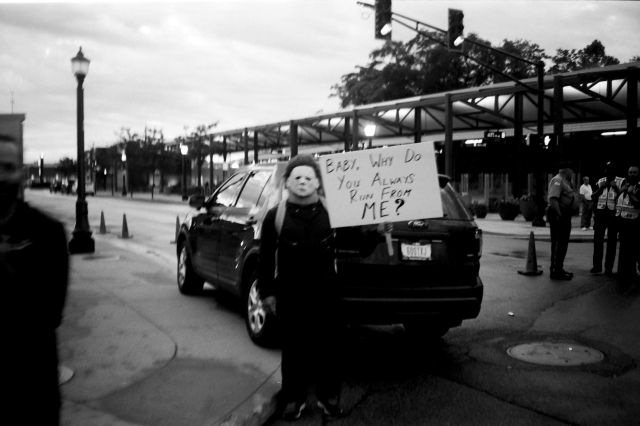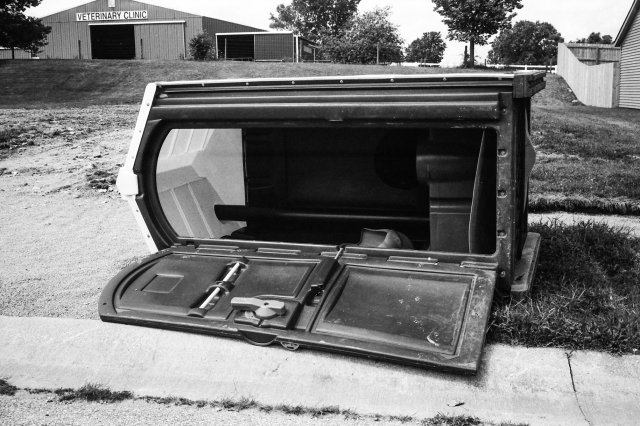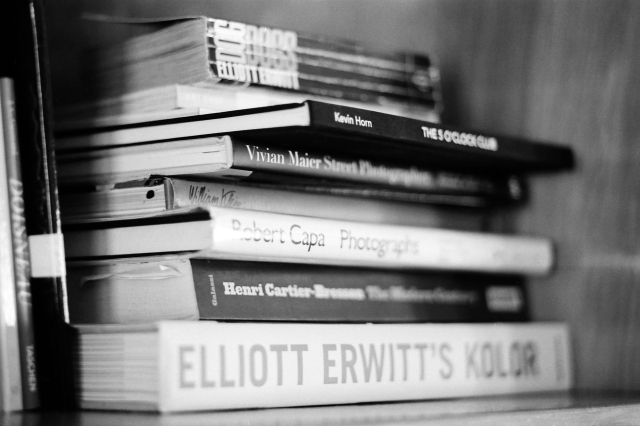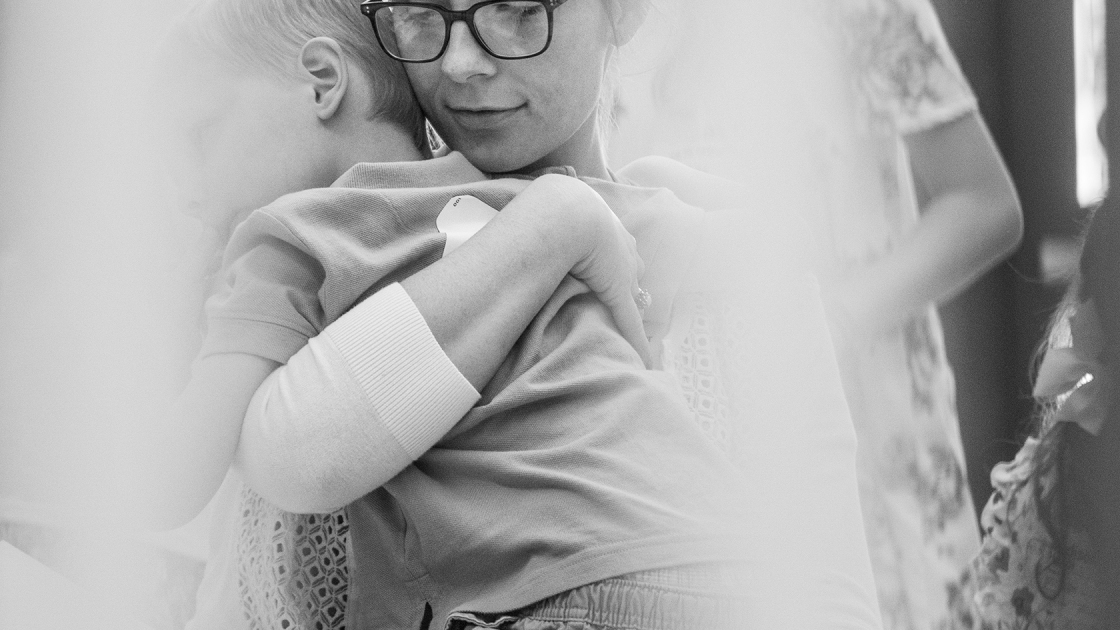This is part 2 of a multipart series on documentary photography. If you haven’t had a chance yet—please read Part 1: Photography Is Losing Its Value.
Who Needs Photographers Anymore?
Part 2: Photography Needs Photographers
I read somewhere that if you can cook macaroni & cheese—then you can develop film.
This is true.
Processing film is extremely simple—at least that’s how I feel about it. I use two chemicals—a developer & a fixer. Of course I’m developing black & white film— color is more complicated. But to start developing at home, all you need are a few tools:
Notice how I’m not going into much detail about these tools. It’s because I don’t care about the details as much as I care about the process.
The Process
“You don’t take a photograph, you make it.”
—Ansel Adams
I started developing film about two years ago. This came on the heels of almost giving up on photography all together. I had a portrait business for many years before experiencing one of the worst cases of burnout that I’ve ever had. I wanted to sell all my cameras and never take a photo again.


Thankfully, around this same time I became inspired by film photographers like Ed Templeton, Daniel Arnold, Elliott Erwitt, The Turnley Brothers, Lee Friedlander, ——the list goes on.
It wasn’t just the fact that they were shooting film—it was the way they saw the world, the way they almost created their own distinct reality through photos. These photographers often capture mundane life events, hotel TV’s, dogs, street art, & strangers. However, they do it in a way that’s so visually compelling & interesting. Photography was suddenly new and fun again. I wanted to go back to the roots of the art-form—so I started developing film.
I processed my first roll of Tri-X 120 film in a bathroom sink. I meticulously planned out each individual shot with my Mamiya RB67—I was so afraid of ruining the film. To my surprise, the film turned out and I was instantly addicted.




It’s so rewarding to pull the wet film out of the tank and see the exposed negatives for the first time. For me, shooting film is a meditation. I think more before pressing the shutter, I get my hands dirty during the developing—I subsequently feel more connected to the process of making images.




Shooting film helped me rediscover what I loved about photography—why I picked up a camera in the first place. It wasn’t to make money—it was for the joy of seeing, of being present, of connecting with my surroundings & experiencing life.

“I think that photography may be the most positive art form: every time you push the shutter you are saying, ‘Yes!’” —Joel Meyerowitz
Practicing film photography isn’t for everyone and I don’t expect every photographer I meet to shoot and develop their own film. However, I’ve learned a lot from the process and grown as a photographer since adopting the habit. Arguably the most important lesson I’ve learned from shooting & developing my own film is a greater respect for the craft.
A Respect For The Craft
For me, developing film isn’t just another hipster trend. Its a way to travel back in time and experience what early photographers went through before the digital era. When you develop film—you have a better understanding of the process of making a photograph.
I recently learned about The Turnley Brothers and how they became interested in photography after being gifted a book by Henri Cartier Bresson. Peter & David Turnley are now world renowned photojournalists & documentary photographers—but they started their photographic careers by taking pictures of their home town (Fort Wayne) and developing film in the basement of their childhood home.


Everyday the twin brothers would travel to McClellan Street & document the lives of the working class during the 1970’s. They shared one camera & and a unique ability to gain access into the lives of the people they photographed. They would process the film and show the images to their family at dinnertime. When they returned to McClellan Street, they would give their prints to the families that they were documenting.


For me, this story perfectly illustrates my feelings about the photographic process. David & Peter were just two teenagers making photographs purely for the joy of the art form. They were inspired by the great photographers that came before them—and have since dedicated their lives to the craft of making powerful images.
The Craft Of Photography Needs Photographers
“To me, photography is an art of observation. It’s about finding something interesting in an ordinary place… I’ve found it has little to do with the things you see and everything to do with the way you see them.” — Elliott Erwitt
I recently dug out some old newspapers and was fascinated by the quality of the images that were taken—just a few years ago.
I love beautiful photographs.
I have a growing collection of photo books—full of images that inspire me to become a better photographer. I study these images and attempt to put myself in the place of the photographer—to understand what they were seeing and how they must have felt when they pressed the shutter.


There was a time when photos were taken for more than just a few likes on social media. The great photographers of the past were motivated by a passion for capturing beauty & form—along with a hunger for documenting the plight of humanity.
I believe that if you’re crazy enough to pick up a camera and pursue photography—it is your responsibility to carry this tradition forward.
Shoot film, learn to see creatively, go around your town and find stories to tell with your camera. Talk to people—be curious.
The craft of photography needs people who are willing to go beyond the tools they are using & pursue what is truly meaningful about the art form. Documentary photography is more than shutter speeds & megapixels—it requires an understanding of the human condition, a passion for combining content & form, and a willingness to believe there is beauty around every corner.
“What use having a great depth of field, if there is not an adequate depth of feeling?” — W. Eugene Smith
In spite of our technology—we’re living in a time of social disconnection. Fear, anxiety, depression are all on the rise as mental illness continues to be fueled by our growing isolation from one another.
Everyone has a phone in their pocket—but are we talking to one another?
Everyone has a camera—but not everyone is a photographer.
Be a Photographer—not just a person with a camera.
Learn about the craft—be inspired by other artists, join a photography club, go put your art on display.
Connect with people in a time when everyone around you is connected to a device.

“It is more important to click with people than to click the shutter.”—Alfred Stieglitz
Photography needs photographers—we are tasked with the great responsibility of carrying the craft forward for future generations.

The next post in this series will be titled: Part 3—Our Friends & Families Need Photographers.
As always, Thank You for reading.
-Tim








Lovely photos and there may be some truth in what you say. However I developed and printed my own B&W photos for many years and all I can say is good riddance to those horrible chemicals and long live digital. Digital was the best thing that happened to my photography. I suspect nostalgia plays a bit of a role here.
Good photos never lose their value and now that everyone is taking photos there are more than ever. Also a lot of crap of course but then there always was, only before it was tucked away and hidden in photo albums.
LikeLiked by 2 people
Great points Jan, I think what I was trying to articulate in this blog was my transition from a commercial photographer to an artist. I don’t see film photography as the best form of photography. I look at my experiments with film as a sort of hero’s journey. I went into the unknown (shooting & developing film) and I came back with a greater respect and appreciation for the art form. I think the overall theme of this series is the question of the importance of photography and how can we as photographers separate ourselves from everyone with their camera phone. Thanks for reading 🙂
LikeLiked by 1 person
I’m enjoying this series. Thanks for writing this. Another point about: “David & Peter were just two teenagers making photographs purely for the joy of the art form”. They gave prints to those they photographed. Relationships were built between subject and photographer and credibility was gained to further their art form. That doesn’t happen with those who click away randomly with their cell phones.
LikeLiked by 1 person
So true 🙂 That’s a great point. Genuine connections should be a goal of any photographer wishing to tell a story/document. Thanks for reading!
LikeLiked by 2 people
Nicely written and illustrated Tim. I must admit that these days I have been seduced totally by digital cameras. There is a great art and skill in developing and printing film, but I like being able to go out and “make photos” and be able to see the result….to know not just in my minds eye but to know for sure that I have got the shot I wanted. I grew up with film cameras in the 60’s, 70’s and 80’s. After the old point and shoots I had as a child I moved on to SLR’s. Had a few Russian and East German cameras first. Finally got an Olympus OM10 – as advertised by David Bailey…..at the time I was greatly influenced by the power of advertising. lol.
Now I mainly use a couple of Nikon DSLR’s but also have an older Fuji digital camera that I tend to carry around most of the time.
I’m mainly into Travel and Street Photography, but also throw in a little nature too. I have a few photos on Instagram… https://www.instagram.com/malcfrost/
LikeLiked by 1 person
I love the instant nature of digital as well. Actually, I stated developing my own film because I wasn’t patient enough to wait for it to be shipped out and processed 😆 but it’s still slower than digital—which slows me down enough to experience that little bit of magic that comes from the waiting part. I enjoy both very much for different reasons. How did you like the OM10? And what type of Fujifilm do you use? I’m curious. As always thanks for reading 🙂
LikeLiked by 1 person
I really liked the OM10. Much easier than the old Zenith that i started off with.
The Fuji camera is a Finepix HS10 with a permanently attached zoom which goes from 24-720mm and has a macro and super macro function.
Speedwise its a bit slow but overall a nice camera if i only have space in my bag for one. The program also allows pictures to be captured in either color or black and white. When i got the Nikon’s i gave the Fuji to my wife, but i keep borrowing it back. 😄
LikeLiked by 1 person
Yeah, the OM10 reminds me of a Canon AE-1 which is what I use for film. It’s nice to have a camera to just throw in a bag and take with you everywhere. The HS10 has quite the focal length! My EDC camera is a Fujifilm X100T. I mainly shoot at 28mm focal length for documentary & street photography.
LikeLike